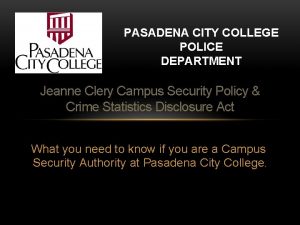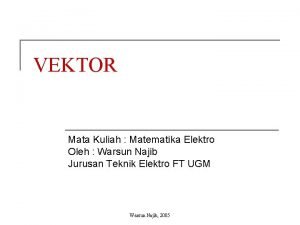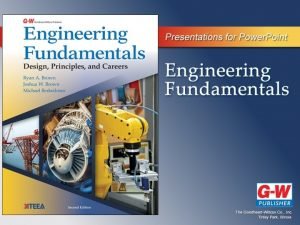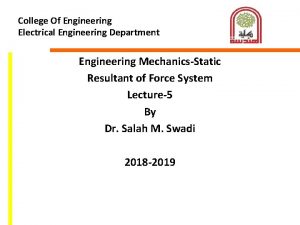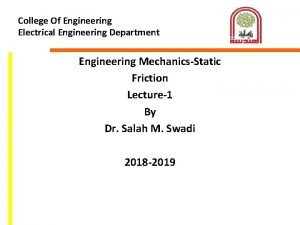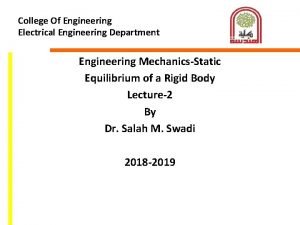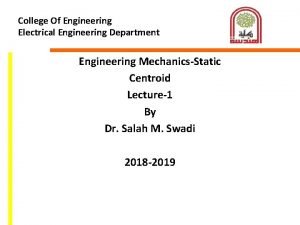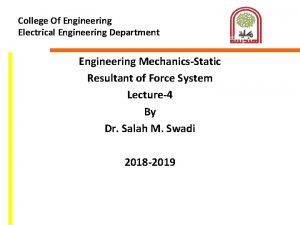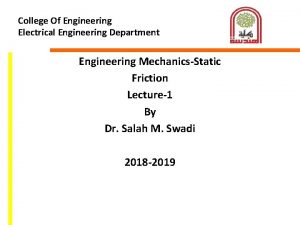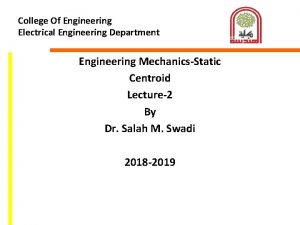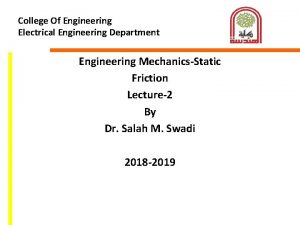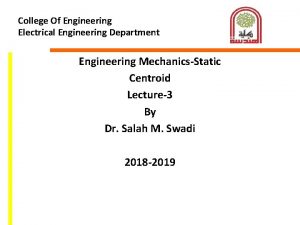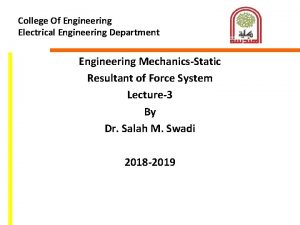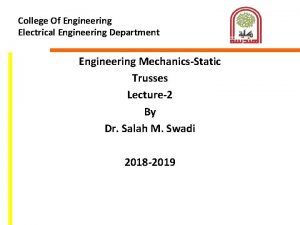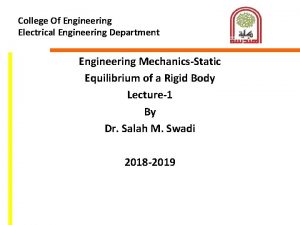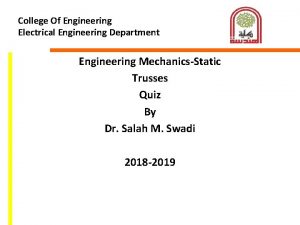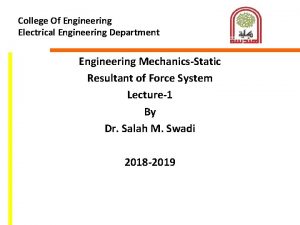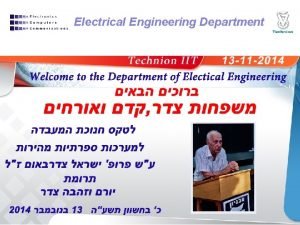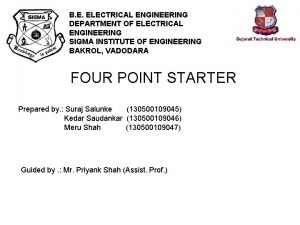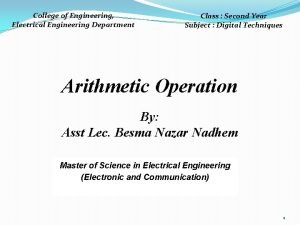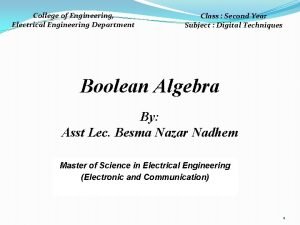College Of Engineering Electrical Engineering Department Engineering MechanicsStatic



















- Slides: 19

College Of Engineering Electrical Engineering Department Engineering Mechanics-Static Trusses Lecture-1 By Dr. Salah M. Swadi 2018 -2019

Chapter Objectives • Determine the forces in the members of a truss using the method of joints and the method of sections • Analyze forces acting on the members of frames and machines composed of pin-connected members

Chapter Outline 1. 2. 3. 4. 5. 6. Simple Trusses The Method of Joints Zero-Force Members The Method of Sections Space Trusses Frames and Machines

6. 1 Simple Trusses • A truss composed of slender members joined together at their end points Planar Trusses • • Planar trusses used to support roofs and bridges Roof load is transmitted to the truss at joints by means of a series of purlins

6. 1 Simple Trusses Planar Trusses • • The analysis of the forces developed in the truss members is 2 D Similar to roof truss, the bridge truss loading is also coplanar

6. 1 Simple Trusses Assumptions for Design 1. “All loadings are applied at the joint” - Weight of the members neglected 2. “The members are joined together by smooth pins” - Assume connections provided the center lines of the joining members are concurrent

6. 1 Simple Trusses Simple Truss • • Form of a truss must be rigid to prevent collapse The simplest form that is rigid or stable is a triangle

6. 2 The Method of Joints • • • For truss, we need to know the force in each members Forces in the members are internal forces For external force members, equations of equilibrium can be applied Force system acting at each joint is coplanar and concurrent ∑Fx = 0 and ∑Fy = 0 must be satisfied for equilibrium

6. 2 The Method of Joints Procedure for Analysis • • • Draw the FBD with at least 1 known and 2 unknown forces Find the external reactions at the truss support Determine the correct sense of the member Orient the x and y axes Apply ∑Fx = 0 and ∑Fy = 0 Use known force to analyze the unknown forces

Example 6. 1 Determine the force in each member of the truss and indicate whether the members are in tension or compression.

Solution • 2 unknown member forces at joint B • 1 unknown reaction force at joint C • 2 unknown member forces and 2 unknown reaction forces at point A For Joint B,

Solution For Joint C, For Joint A,

Solution For Joint C, For Joint A,

Solution • FBD of each pin shows the effect of all the connected members and external forces applied to the pin • FBD of each member shows only the effect of the end pins on the member

6. 3 Zero-Force Members • • • Method of joints is simplified using zero-force members Zero-force members is supports with no loading In general, when 3 members form a truss joint, the 3 rd member is a zero-force member provided no external force or support reaction is applied to the joint

Example 6. 4 Using the method of joints, determine all the zero-force members of the Fink roof truss. Assume all joints are pin connected.

Solution For Joint G, GC is a zero-force member. For Joint D,

Solution For Joint F, For Joint B,

Solution FHC satisfy ∑Fy = 0 and therefore HC is not a zero-force member.
 Electrical engineering department
Electrical engineering department Tum department of electrical and computer engineering
Tum department of electrical and computer engineering Ucla systems engineering
Ucla systems engineering Pasadena city college police department
Pasadena city college police department Vector electrical engineering
Vector electrical engineering Gwu electrical engineering
Gwu electrical engineering Tel aviv university electrical engineering
Tel aviv university electrical engineering Northwestern computer science department
Northwestern computer science department Klipsch school of electrical and computer engineering
Klipsch school of electrical and computer engineering Umd ece faculty
Umd ece faculty Define estimation in electrical engineering
Define estimation in electrical engineering Electrical engineering environmental issues
Electrical engineering environmental issues Wpi ece flowchart
Wpi ece flowchart Electrical engineering presentation
Electrical engineering presentation Kfupm ee faculty
Kfupm ee faculty Big data in electrical engineering
Big data in electrical engineering Define electrical engineering
Define electrical engineering Basic electrical engineering kulshreshtha
Basic electrical engineering kulshreshtha University of belgrade school of electrical engineering
University of belgrade school of electrical engineering Electrical engineering notation
Electrical engineering notation



